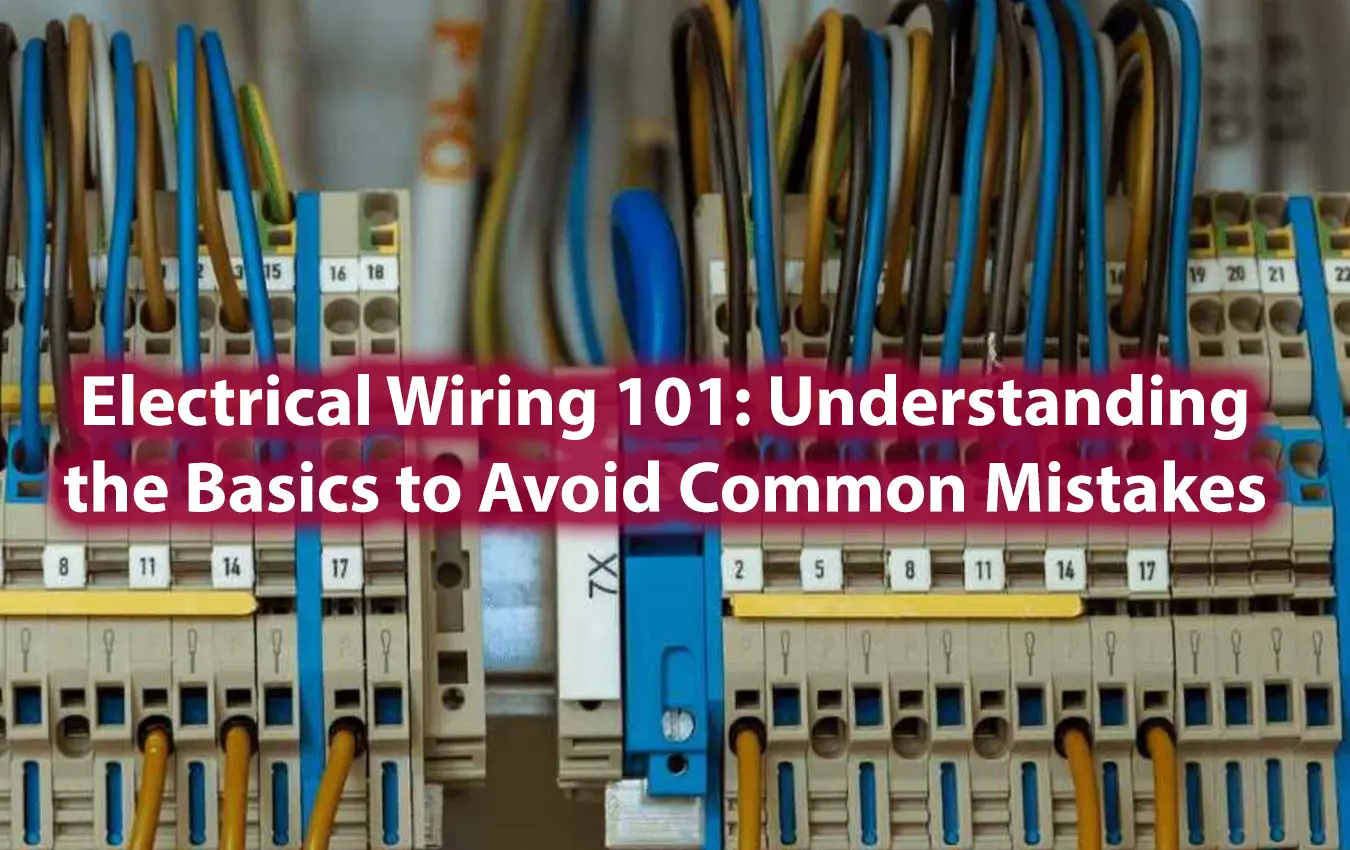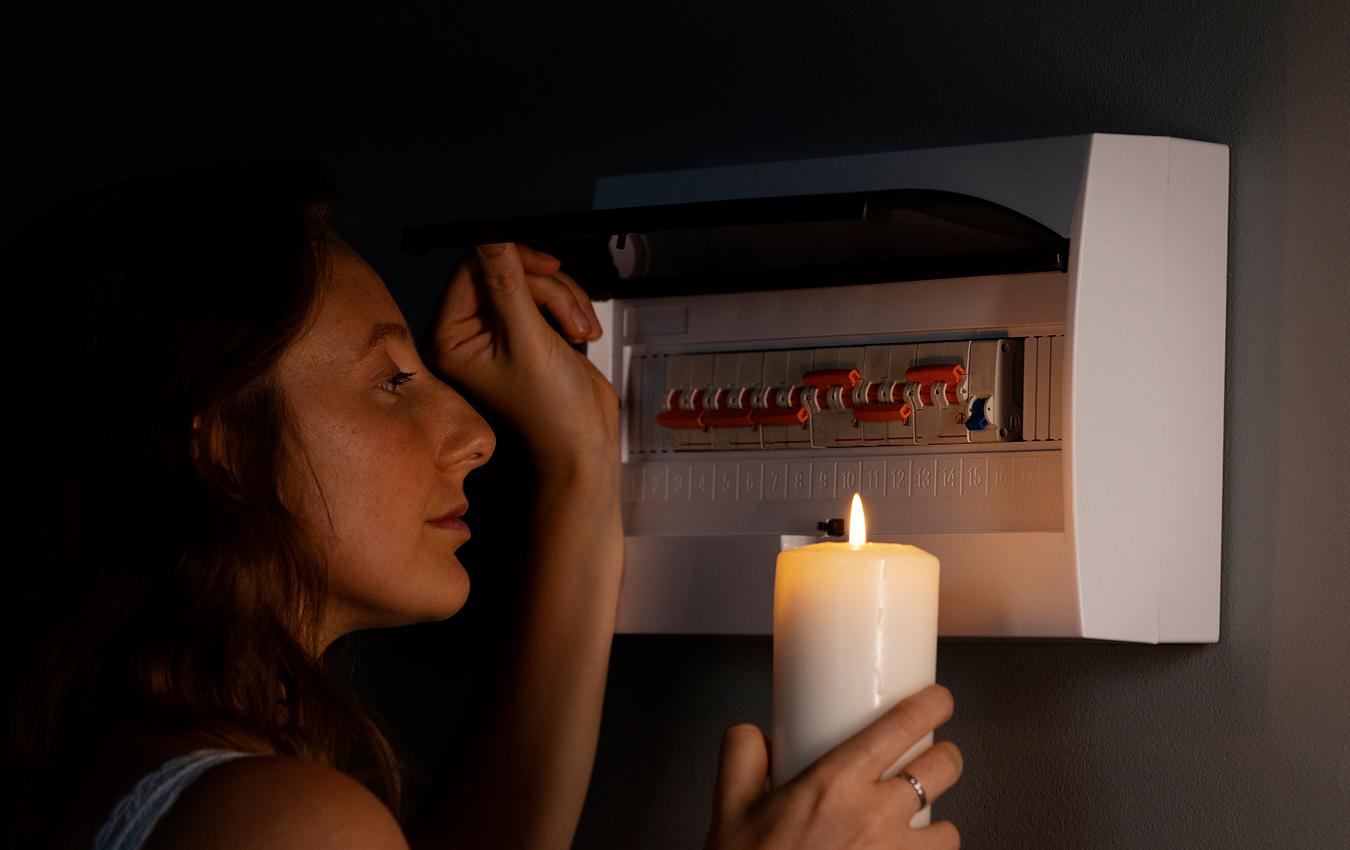Electricity powers our modern lives, but it can also be a source of danger if not handled correctly. Understanding the fundamentals of electrical wiring in your home is crucial for both safety and functionality. Whether you’re a DIY enthusiast or simply want to be a more informed homeowner, this guide will shed light on the different types of wiring, essential components, safety precautions, and common mistakes to avoid. By the end, you’ll have a solid foundation in electrical wiring basics.
Types of Electrical Wiring
It might surprise you, but the wiring in your house isn’t all the same. For each purpose, there’s a specific type designed for optimal safety and performance. NM cables, conduit wiring, and low-voltage wiring are the most common types. Let’s talk about them.
NM cable
Also known as Romex, this is the workhorse of residential electrical systems. This versatile cable, encased in a plastic sheath, contains multiple color-coded wires and is the go-to choice for wiring outlets, light fixtures, and standard household circuits. Its flexibility and ease of installation make it a popular option for most indoor wiring needs.
Conduit Wiring
Conduit wiring offers an added layer of protection and durability. These sturdy metal or plastic pipes encase individual wires, shielding them from physical damage, moisture, and other environmental factors. Conduit wiring is commonly used in exposed areas such as basements, garages, and outdoor locations where wires may be susceptible to impact or harsh conditions.
Low-Voltage Wiring
This wiring is designed for systems operating at lower voltages, typically 50 volts or less. It is prevalent in applications like doorbells, thermostats, security systems, landscape lighting, and audio/video installations. The lower voltage makes it safer to work with and allows for more flexibility in routing and installation compared to standard electrical wiring.
The Essential Components
Your home’s electrical system is a network of interconnected components, each playing a vital role in delivering power safely and efficiently. Let’s take a closer look at the most essential ones – circuit breakers, outlets and switches, and wires.
Circuit Breakers
The unsung heroes of electrical safety, circuit breakers are housed in your electrical panel. These devices act as protectors, automatically interrupting the flow of electricity when a circuit is overloaded. Thus, they prevent overheating, electrical fires, and potential damage to your appliances and electronics.
Outlets and Switches
The primary interface between you and your electrical system, outlets and switches facilitate the connection and control of electrical devices. Outlets provide the familiar sockets where you plug in appliances, electronics, and chargers. Switches, on the other hand, allow you to control the flow of electricity to lights, fans, and other fixtures.
Wires
Wires are the conduits through which electrical current flows. These conductors are typically made of copper or aluminum and come in various thicknesses, known as gauges. The gauge of a wire is carefully chosen to match the intended load of the circuit, ensuring safe and efficient power delivery. Using the wrong gauge wire can lead to overheating, posing a significant fire hazard.
Safety First: Tips for Working Around Electrical Wiring
Safety is paramount when dealing with electrical wiring. Electricity is dangerous if not handled with care and respect. Whether you’re tackling a simple DIY project or merely troubleshooting an issue, prioritizing safety should always be your top concern. To help you navigate electrical work safely, we’ve compiled essential tips to keep in mind.
Always Turn Off the Power
This is the golden rule of electrical safety. Before starting any electrical project, no matter how small, locate the appropriate breaker in your electrical panel and switch it to the “off” position. This simple step eliminates the risk of electric shock and ensures a safe working environment.
Use the Right Tools
Having the right tools for the job is essential for both safety and efficiency. Invest in basic electrical tools like a non-contact voltage tester to verify if a wire is live and wire strippers to safely remove insulation from wires. These tools will help you work confidently and reduce the risk of accidents.
Secure Connections
Loose or poorly connected wires can lead to arcing, sparking, and potentially devastating fires. Always use appropriate wire connectors, commonly known as wire nuts, to secure connections tightly. Ensure that all wires are properly stripped and inserted into the connectors to establish a solid and safe electrical connection.
When in Doubt, Call a Professional
Electricity is not something to be taken lightly. If you ever feel unsure, uncomfortable, or overwhelmed by an electrical task, don’t hesitate to call a qualified electrician. Their expertise and experience will ensure the job is done safely and correctly, protecting you and your home from potential hazards.
Premier Electrical Services specializes in all things electrical. Whether you’re tackling a DIY project and need guidance, facing a complex wiring issue, or want peace of mind with a professional inspection, our team of experts has you covered. Call us to learn more: 954-900-1696. Keep reading to learn about electrical wiring.
Common Mistakes to Avoid in Electrical Wiring
One of the most common electrical hazards is overloading circuits. Think of a circuit as having a maximum capacity, like a bucket you can only fill so full. Plugging in too many devices, especially power-hungry appliances like hair dryers, microwaves, and space heaters, is like adding too much water. This overloads the circuit, causing the breaker to trip. While a trip is a safety feature, repeated tripping can damage the breaker, and even worse, the overloaded wiring can overheat, creating a fire risk.
Another frequent mistake is using the wrong size wire. Electricity flowing through a wire is similar to water through a pipe. Just as a high-flow faucet needs a wider pipe, appliances that draw a lot of power require thicker wires to safely carry the electrical current. Using a wire that’s too thin creates a bottleneck, risking overheating and potential fire. When adding new circuits or outlets, always consult an electrician or reference a wiring chart to ensure you’re using the correct wire size.
Finally, underestimating the complexity of electrical work leads to many issues. DIY videos can make it seem simple, but correct electrical installation involves more than just connecting wires. Mistakes in breaker sizing, leaving loose connections within junction boxes, or improperly wiring outlets can all create hidden problems waiting to happen. While there are some small electrical tasks suitable for DIY, anything involving rewiring, upgrades, or troubleshooting is best handled by an experienced professional.
Benefits of Hiring Premier Electrical Services
While some minor electrical tasks may be suitable for DIY, complex projects or troubleshooting are situations where the expertise of a professional electrician is invaluable. Here’s why hiring Premier Electrical Services ensures the job is done safely and correctly:
Expertise You Can Trust
Premier Electrical Services’ technicians are highly skilled and possess the in-depth knowledge, training, and experience to handle everything from flickering lights to complex panel upgrades.
Ensuring Code Compliance
Building codes related to electrical work change over time and exist to keep your home safe. Premier Electrical Services stays current on these codes, guaranteeing that any work they do meets or exceeds all relevant standards.
Efficiency and Cost Savings
Our team gets the job done right the first time, saving you money and hassle compared to attempting DIY fixes. Premier Electrical Services provides prompt service and works efficiently to minimize disruption to your home.
Safety and Peace of Mind
From flickering lights to potential safety hazards in older homes, let Premier Electrical Services’s experts identify and resolve issues. Rest assured, knowing your home’s electrical system is safely installed and maintained for the protection of your family and the longevity of your home.
Conclusion
Understanding the basics of your home’s electrical system is an important step in being a responsible homeowner. It lets you make informed choices and spot potential problems. However, remember that your safety is paramount. Knowing when to call in the professionals saves time and prevents serious hazards.
If you suspect an electrical issue or are planning a project, don’t hesitate to contact Premier Electrical Services. Our team is committed to providing exceptional service, ensuring your home’s electrical system is safe, efficient, and up to date. Call us now: 954-900-1696.
Check out the latest news:
- Commercial Energy Audit: Spotting the Sources of Energy Waste
- Protect Your Fort Lauderdale Home with Whole-House Surge Protection
- Power Outages in Fort Lauderdale: How to Protect Your Home
- Preparing for a Home Rewiring Project: A Checklist for Homeowners
- 5 Critical Signs You Need a Whole-House Surge Protector





